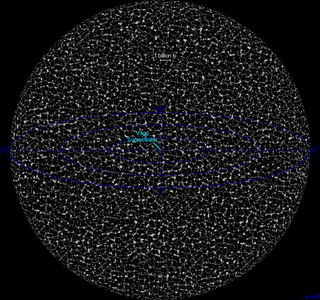Colleagues and scholars from coast to coast, across Bass Strait and all the ships at sea.
On November 9 many people around the world observed the birthday of the late Carl Sagan - astronomer and philosopher extraordinaire.
As we again witness yet another conflict in the Middle-East (between people of almost identical heritage) over a tiny parcel of land; continue to witness much of the world's political leadership hoping that the effects of climate change would disappear into the ether; and are bemused by a political discourse in Australia that is obsessed with 'questions to answer', I thought it would be worthwhile reflecting on this wonderful photograph of the Earth.
This marvellous picture is one of the great legacies of Carl Sagan, as are his most insightful words that accompany it (see below).
The Pale Blue Dot
The Pale Blue Dot is a photograph of planet Earth taken in 1990 by the Voyager 1 spacecraft from a record distance of about 6 billion kilometres from Earth. In the photograph, Earth is shown as a tiny dot (0.12 pixel in size) against the vastness of space. The Voyager 1 spacecraft, which had completed its primary mission and was leaving the Solar System, was commanded by NASA to turn its camera around and to take a photograph of Earth across a great expanse of space, at the request of Carl Sagan. (Wikipedia)
Carl Sagan: "The Voyager spacecraft was a long way from home. I thought it might be a good idea, just after Saturn, to have them take one last glance homeward.
From Saturn, the Earth would appear too small for Voyager to make out any detail. Our planet would be just a point of light, a lonely pixel. Hardly distinguishable from the many other points of light Voyager would see; nearby planets, far off suns.
But precisely because of the obscurity of our world thus revealed, such a picture might be worth having.
It had been well understood by the scientists and philosophers of classical antiquity that the Earth was a mere point in a vast, encompassing cosmos.
But no one had ever seen it as such; here was our first chance, and perhaps also our last - for decades to come.
So here they are, a mosaic of squares laid down on top of the planets and a background smattering of more distant stars.
Because of the reflection of sunlight off the spacecraft, the Earth seems to be sitting in a beam of light as if there was some special significance to this small world. But it's just an accident of geometry and optics.
There is no sign of humans in this picture. Not our re-working of the Earth's surface, not our machines, not ourselves.
From this distant vantage point, the Earth might not seem of any particular interest. But for us, it's different. Consider again that dot. That's here. That's home. That's us.
On it everyone you love, everyone you know, everyone you ever heard of, every human being who ever was, lived out their lives.
The aggregate of our joy and suffering, thousands of confident religions, ideologies, and economic doctrines, every hunter and forager, every hero and coward, every creator and destroyer of civilization, every king and peasant, every young couple in love, every mother and father, hopeful child, inventor and explorer, every teacher of morals, every corrupt politician, every 'superstar', every 'supreme leader', every saint and sinner in the history of our species lived there – on a mote of dust suspended in a sunbeam.
The Earth is a very small stage in a vast cosmic arena. Think of the rivers of blood spilled by all those generals and emperors so that in glory and triumph they could become the momentary masters of a fraction of a dot.
Think of the endless cruelties visited by the inhabitants of one corner of this pixel on the scarcely distinguishable inhabitants of some other corner. How frequent their misunderstandings, how eager they are to kill one another, how fervent their hatreds.
Our posturings, our imagined self-importance, the delusion that we have some privileged position in the universe, are challenged by this point of pale light.
Our planet is a lonely speck in the great enveloping cosmic dark. In our obscurity – in all this vastness – there is no hint that help will come from elsewhere to save us from ourselves.
The Earth is the only world known, so far, to harbour life. There is nowhere else, at least in the near future, to which our species could migrate. Visit, yes. Settle, not yet. Like it or not, for the moment, the Earth is where we make our stand.
It has been said that astronomy is a humbling and character-building experience.
There is perhaps no better demonstration of the folly of human conceits than this distant image of our tiny world.
To me, it underscores our responsibility to deal more kindly with one another and to preserve and cherish the pale blue dot, the only home we've ever known."
YouTube link see here
Earthrise from the Moon
The Solar System
For some additional perspective, as Carl Sagan would often say, there are more stars in the Universe than grains of sand on all the beaches of all the world.
In fact, scientists have estimated there are probably ten times as many stars (of which our Sun is only one) as there are grains of sand on the entire planet Earth.
In the vastness of space and the immensity of time, it was our privilege to have shared a planet and an epoch with Carl Sagan.


















Thank you for this reminder Andrew, and the stunning photos. Carl Sagan was without doubt one of our greatest communicators and is words and wisdom are missed.
ReplyDelete